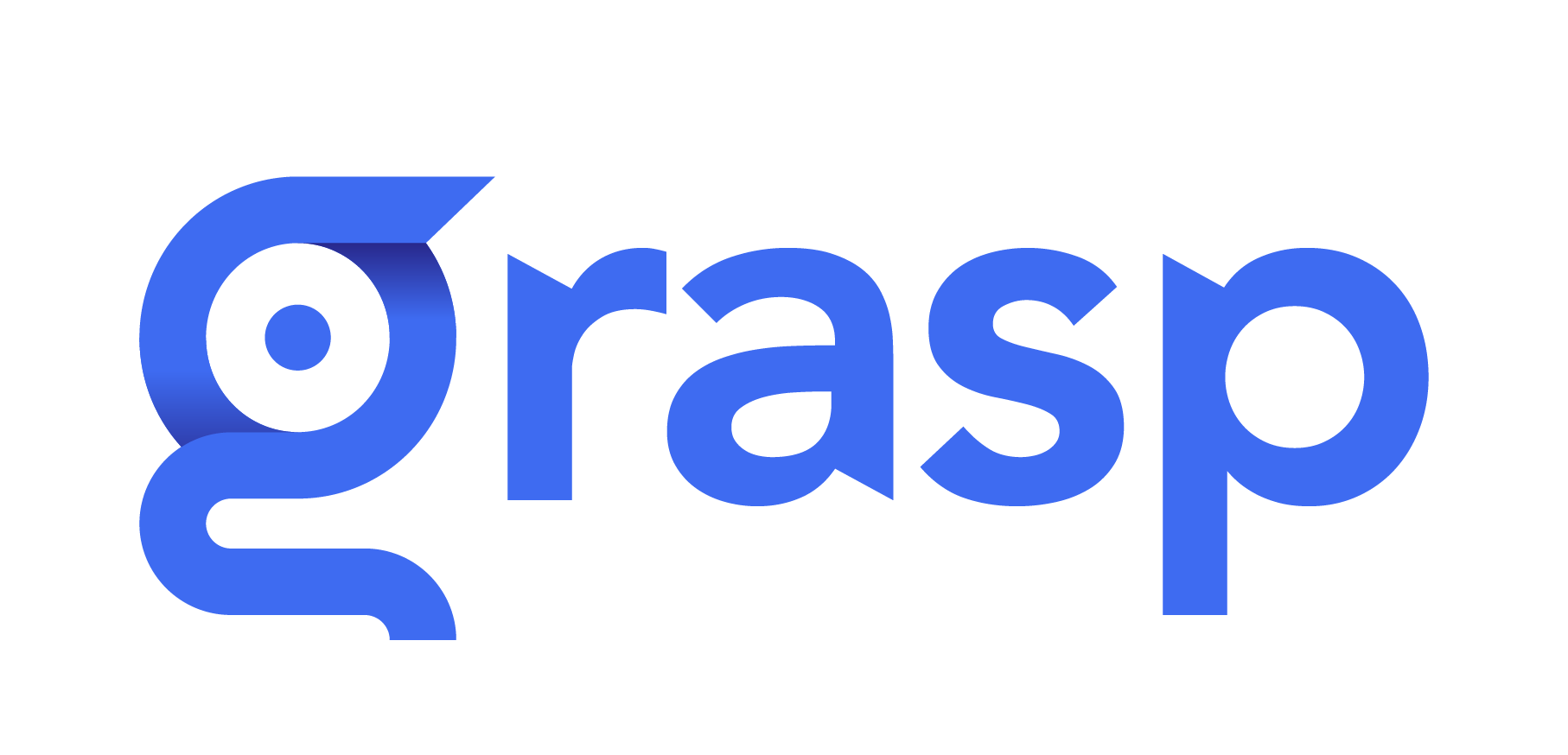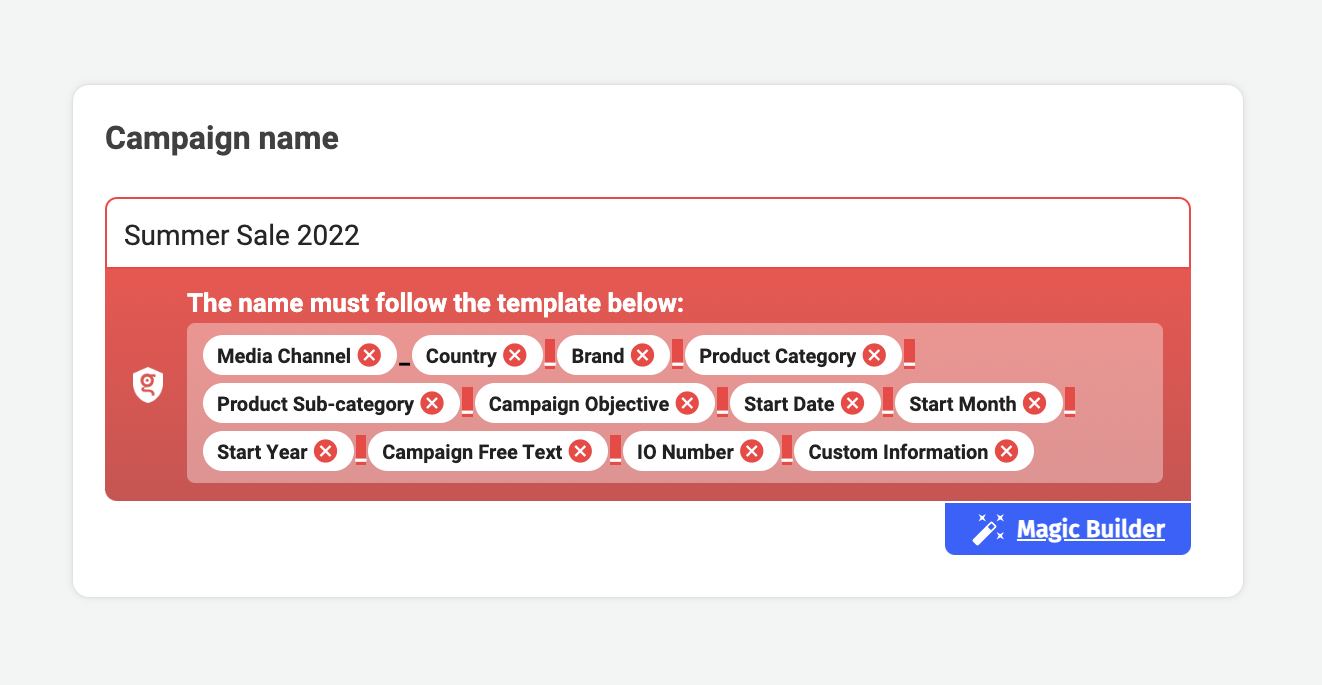It may come as a surprise for many industry insiders as much as for outsiders, that almost 100% of the time digital advertising tracking heavily relies on how a campaign is named.
While we easily assume that the name for a digital campaign should be simple and straightforward, such as “Summer Sale 2022”, it is in fact quite the opposite. In reality, even the simplest campaign name is way more complex than that. And the bigger the ad operations, the more complicated and technical the campaign names will be.
A realistically “simple” naming structure, or taxonomy, for some of the leading global advertisers can look like this:
[Media Channel]_[Country]_[Brand]_[Product Category]_[Product Sub-category]_[Campaign Objective]_[Campaign Start Date]-[Campaign Start Month]-[Campaign Start Year]_[Campaign Free Text]_[IO Number]_[Custom Information].
And this structure and the information within can further vary, depending on the media buying platform, and the market of ad operations.
Many global advertisers, brands and media buying agencies alike, have invested millions of dollars for years to come up with an extremely well-thought and sophisticated taxonomy for their digital campaigns, with the objective of conducting more granular performance analysis, and taking better control of their digital marketing data.
World’s leading digital advertisers have built an internal analytics team, worked with an external data consulting service and adopted a powerful BI system. They have even put in place a bonus framework to ensure that their local media teams are incentivized to follow strictly the naming structure across hundreds of thousands of digital campaigns they launch and manage on a weekly basis around the world.
There have been lots of expensive efforts of lots of people, after years of hard work. However, in spite of a world-class taxonomy and a robust BI to dissect and read the structure, the digital marketing data itself is still extremely highly noncompliant and inaccurate.
Why?
Generating compliant and accurate digital marketing data is not a one-stop shop, but rather a quite funneled process. Coming up with a mature naming convention for digital campaigns serves as the upper funnel of this process and it is the first step towards data-driven marketing success, but it’s usually the lower part of the funnel where things can go very wrong.
- Complex, very often out-dated and sometimes broken naming files
The people that define the naming convention are actually very siloed from the people that execute the naming convention, as the former is a technical data team, while the latter is an operational media team.
The data team communicates the technical and difficult naming structure through internal trainings, by PDFs, by PowerPoint slides, or by emails. Among the world’s largest digital advertisers, they tend to leverage Excel files or Google Sheets with lots of convoluted functions, formulas and warnings to automate part of the naming generation process.
However, these taxonomy generation files are extremely difficult to read and not connected to any source of truth. While they are being shared from one user to another, somewhere down the line the files can end up outdated, and even erroneous.
- 3rd party naming generation files or tools do not correspond to the actual needs of the media teams
In the best case scenario, the most advanced digital advertisers already started using different online, connected naming generation tools that serve as an always correct and updated source of truth. Unfortunately, this is still far from solving the problem.
As naming conventions are being input and executed by the operational media teams who have tons of campaigns to manage every day, it is simply unrealistic and almost impossible for them to go through a 3rd party file or online tool to generate every name for every campaign, every ad group and every creative they create.
More often than not, for the sake of efficacy, media teams compile the naming conventions manually themselves according to their understanding of what the naming structure should be based on the campaign content. It is impossible to know or to tell that a tiny and seemingly irrelevant detail, such as the misuse of a space, an underscore or a lowercase letter, can be a major human error and can break the naming pattern completely, which causes data loss for the entire campaign.
And to illustrate how severe the problem of data loss is, here’s an insightful read from BusinessWire – “New Study Finds Marketers Waste 21 Cents of Every Media Dollar From Poor Data Quality“
For digital advertisers and their data teams, the urgent need of data control and data governance is real.
But for media teams, the urgent need of being able to handle the massive amount of campaigns efficiently while being compliant with the demanding naming conventions, is also very real.
This has been a burning dilemma and challenge for all key parties in the digital media buying process for years, and Grasp’s taxonomy suite tackles both problems at the same time with its unique, patent-pending preventive approach.
While Grasp also offers an online, fully connected and always updated source of truth for digital advertisers’ taxonomies, what has proven to be a real game changer for taxonomy compliance and data hygiene is the fact that Grasp can check and validate naming structure during campaign setup, and prevent any potential human errors even before campaign launch.
And the fact that Grasp’s preventive solution is natively integrated with major media buying platforms such as META, DV360, Google Ads, CM360 etc, all media teams can use it seamlessly without passing through any 3rd party platform, and without any process change or learning curve.
Grasp’s taxonomy suite focuses on the lower part of the data governance funnel, where the majority of compliance issues stem from. It is a data control solution that provides digital advertisers with the ultimate governance of their taxonomies, as well as a productivity tool that empowers media teams to operate more compliantly and more efficiently.



